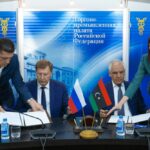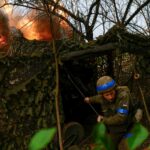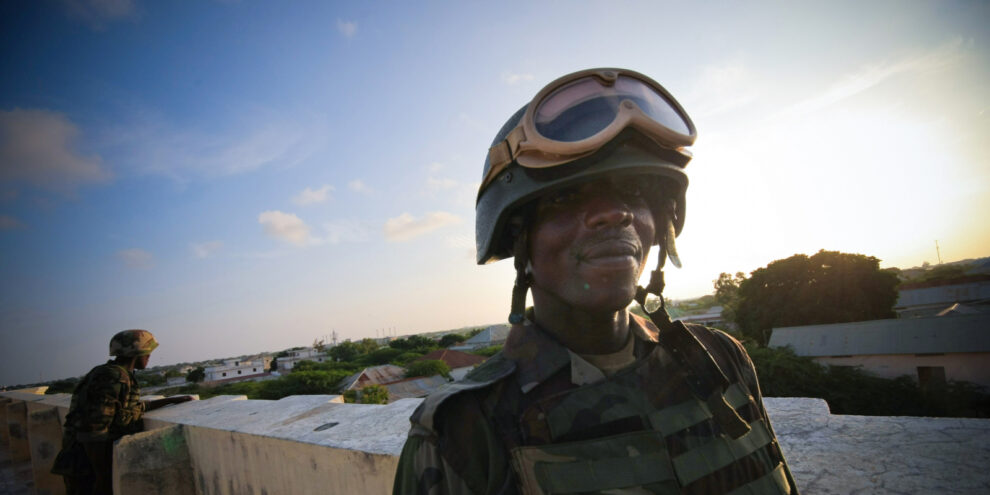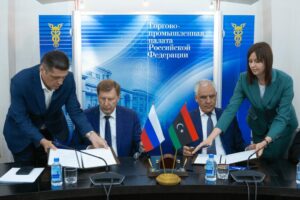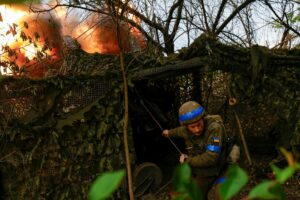Over the last two decades, places like the Sahel, Lake Chad Basin, Somalia, eastern Democratic Republic of the Congo (DRC), and Northern Mozambique have experienced a rise (and in some cases, a resurgence) of groups that use violence to challenge the state. Often termed “rebel groups,” some, like the M23 in eastern DRC, fit the rebel model. But many others take the form of violent extremist insurgencies that mix insurgent tactics with criminal activities, such as banditry and the illicit trading of goods, drugs, money, and natural resources. What both have in common is the use of violence to pursue political and economic objectives related to long-standing center-periphery grievances, and economic and political marginalization.
This new complex threat—coupled with the shortcomings in existing security arrangements (including in traditional peacekeeping and peace operations)—has led to the emergence of innovative responses that can be broadly described as stabilization operations. Some of these have become known as Ad-hoc Security Initiatives (ASIs), which have in turn spawned debate as to how ASIs work in relation to the African Union’s African Standby Force and African Peace and Security Architecture.
The Rise of Ad-Hoc Security Initiatives
In 2003, the newly established African Union (AU) created the African Standby Force (ASF) in order to advance African agency and a standardized African approach to addressing the continent’s peace and security threats. The African Standby Force comprises soldiers, civilians, and police from three of Africa’s regional economic communities (RECs) and two regional mechanisms (RMs), which represent the five regions of Africa—north, east, central, west, and south. While the RECs and RMs generate the personnel—pledged to the African Standby Force from their own standby forces on a rotational basis—the AU and the RECs/RMs are jointly responsible for managing and deploying the force.
However, the African Standby Force has not been able to deploy as intended. Instead, there is growing participation in operations through joint security arrangements or solely through RECs. While the first ASF deployments through RECs began in 2017, these were only formally acknowledged by the AU in 2020. More recently, in July 2021, the Southern African Development Community (SADC) responded to a violent extremist insurgency in Cabo Delgado, northern Mozambique, with a stabilization operation that came loosely under the auspices of the African Standby Force—it was initiated by SADC and only later sought endorsement from the AU Peace and Security Council. In another example, in November 2022, the East African Community deployed its own stabilization operation—initially outside the ASF arrangement—to the eastern DRC.
The capacity and decision-making power to deploy forces have largely remained with regional blocs, as states impacted by violence and insecurity are seeking responses that are context-specific and tailor-made for their unique needs. Ad-hoc security arrangements becoming a growing norm has added to this trend.
One of the first ad-hoc responses—the Regional Cooperation Initiative Elimination of the Lord’s Resistance Army—came together in 2011. This was the first of three security arrangements that share specific characteristics and came to be known as ASIs. The second ASI formed in 2015 when four states from across the Lake Chad Basin region (Cameron, Chad, Niger, and Nigeria) and Benin revitalized the Multinational Joint Task Force (MNJTF) to counter Boko Haram. A few years later, in the Sahel in 2017, states affected by endemic poverty, inequality, and social and political exclusion saw existing insurgence groups connecting with newly formed terrorist groups who operated in border areas. As a result, the G5 Sahel Joint Force (JF-G5S, or in French, FC-G5S) was formed, creating the third ASI.
In the latter examples, both operations and troops operated within their own borders while occasionally undertaking cross-border hot pursuits or joint operations. These operations are coordinated through a joint headquarters to address the transnational nature of the violent extremist groups that need containment.
Although all the AU member states involved in these operations participate in African Standby Force arrangements through RECs or RMs, these operations and the organizations that deployed them are not part of the African Standby Force. However, they have been endorsed by the AU’s Peace and Security Council and Commission (and later included as part of the AU doctrine on peace support operations), and the AU provides support to MNJTF.
The Structure of ASIs
Ad-hoc Security Initiatives share a number of features. They are collective or joint security arrangements between countries that share a specific subregion, national border, or transnational threat. They typically have a combined command structure or joint secretariat that coordinates and manages the response. The member states that are part of these arrangements contribute troops and other capabilities to the joint effort, but these are deployed primarily within their own national borders.
Additionally, ASIs have four unique characteristics that distinguish them from traditional peace operations.
First, while most United Nations (UN) and AU peace operations are deployed within the borders of one country, ASIs are responding to a shared transnational threat, and so are managing security in an area where two or more national borders meet.
Second, while ASI security forces operate within their own national territories, they have the facility for hot pursuit across borders and can conduct limited operations during these pursuits, with additional capacity for occasional pre-planned joined operations. This differs from the mainstream peace operation model which is usually made up of a multinational force deployed into a third country, e.g., the African Union Transition Mission in Somalia (ATMIS).
By using a country’s own forces in its own territory as part of a regionally coordinated operation, ASIs solve a number of problems that international peace operations have grappled with, such as the need for UN authorization under Chapter VII of the UN Charter to use force; the need to enter into Status of Forces agreement with a host country; and legal jurisdiction issues when troops commit crimes in another country as part of a UN or AU peace operation.
And since ASIs deploy national forces operating within their own border, they can rely on national command, control, and support arrangements, and can be strengthened, re-supplied, or rotated more easily than if they were part of an international deployment in a third country. This means that the cost of the operations can be mostly covered by national defense budgets, with the only additional costs associated with the multinational headquarters. And in cases where operational needs exceed national budget resources, countries have sought additional partner support, often advocated through a lead nation.
Third, while these operations are coordinated through a multinational headquarters, the functions of these headquarters are limited to joint strategic planning, enabling liaison, and coordination. This means participating countries retain operational command of their own forces. The headquarters are focused on the combined effect of the national operations, facilitating information and intelligence sharing among the countries and forces involved, and coordinating political and material support with international partners.
Fourth, the overall operation does not need to be authorized under Article 51 of the UN Charter to have a basis in international law. They operate within their own national legal frameworks and on the basis of one country inviting another into its territory according to bilateral or collective defense agreements, or on the basis of the right to seek help from others for self-defense.
ASIs: Implications for the African Standby Force and the African Peace and Security Architecture
While stabilization operations may have the endorsement and support of the AU Peace and Security Council—and in some cases, the UN Security Council—they are not deployed under the auspices, management, or command of the AU or the African Standby Force. The role of the AU is limited to providing strategic-level monitoring, political direction, and coordination in cases where there is a memorandum of understanding on the modalities of this relationship. This brings into question how these ASIs fit into the African Standby Force and the African Peace and Security Architecture.
The 2020 African Union doctrine on peace support operations (and subsequent meetings) have started to clarify where ASIs fit within the architecture by making a distinction between operations mandated and carried out by the African Union (i.e., peace support operations), and those authorized or endorsed by the African Union Peace and Security Council but carried out by RECs/RMs or coalitions of the willing. The African Standby Force model does provide for coalitions of the willing, but ASIs have been established by existing RECs or other subregional institutions. The ASF concept is currently being revised, and perhaps a reconceptualized African Standby Force will be flexible enough to accommodate a wider range of operations and African regional and subregional institutions, so that similar context-specific innovations can be more readily integrated into it.
The deployment and use of ASIs should be seen as a valuable asset in dealing with future instability if they can be adjusted and deployed to harness a more adaptive approach through their deployments. To do this, ASIs must move away from assuming a position of supporting a legitimate government against illegitimate insurgents, as it can cause legitimacy issues when it operates alongside a host state that is dishonest in the eyes of its people. If insurgencies are to be eliminated, states must admit that deploying ASIs will not win conflicts without dealing with their root causes. Consequently, future operations—ASI, stabilization, or coalition of the willing—should work with the government to address the drivers of the conflict, including aspects that elites are reluctant to acknowledge and address.
Source: reliefweb

